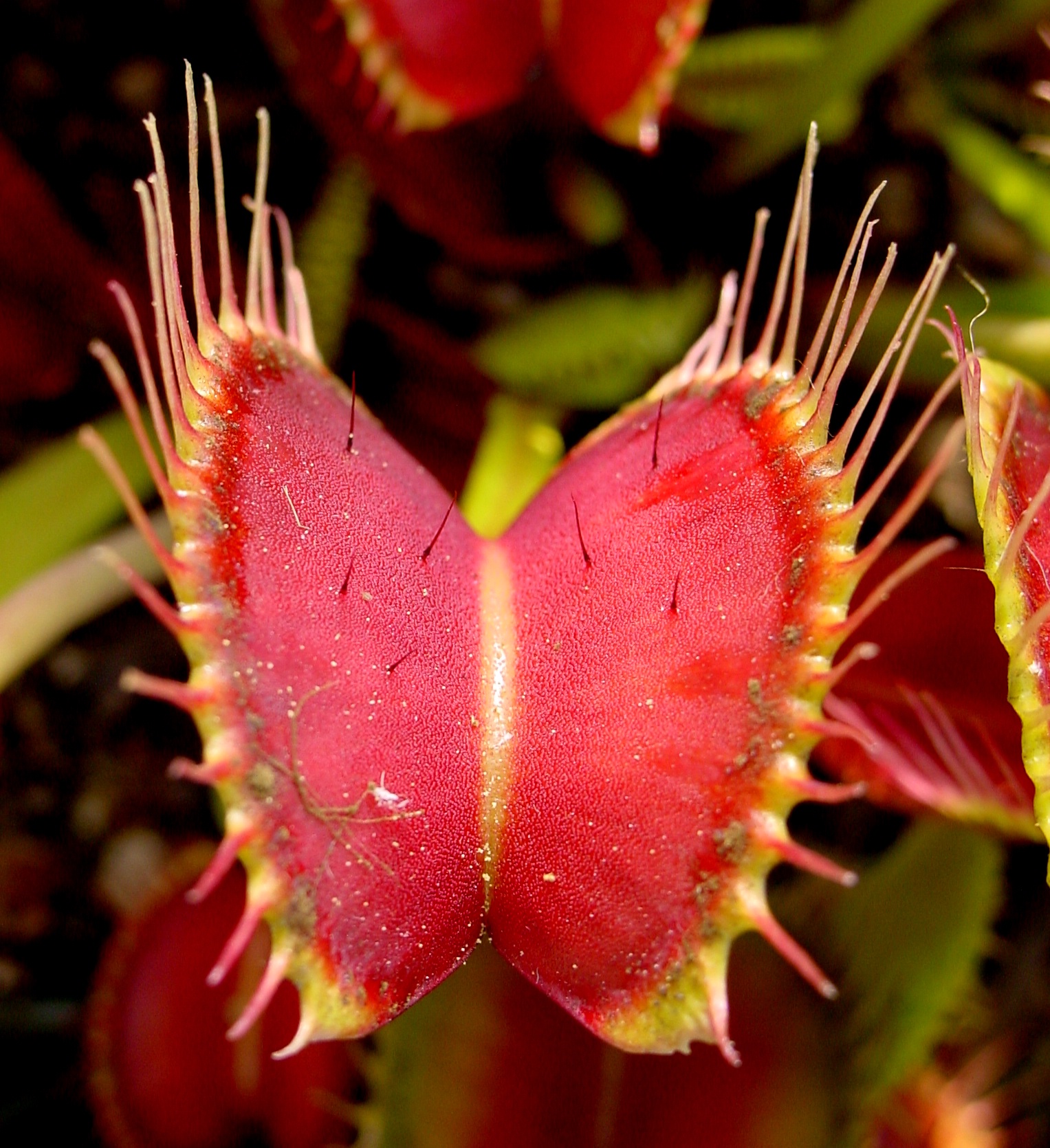Alright, here’s a 3000-word article about Dionaea muscipula, the Venus flytrap, formatted with `
` and `
` tags instead of “.
The Enigmatic Dionaea: A Carnivorous Marvel
The Enigmatic Dionaea: A Carnivorous Marvel
The Venus flytrap, scientifically known as Dionaea muscipula, stands as a testament to the extraordinary adaptations found in the plant kingdom. This carnivorous wonder, native to the subtropical wetlands of the southeastern United States, captivates both scientists and hobbyists with its unique ability to trap and digest insects. Unlike most plants that rely on photosynthesis for sustenance, Dionaea supplements its diet with nitrogen and other nutrients obtained from its prey.
Morphology and Mechanism: The Trap’s Intricacies
The Trap’s Structure

The most striking feature of Dionaea is its modified leaves, which form the iconic trap. Each trap consists of two hinged lobes, adorned with sensitive trigger hairs along their inner surfaces. These hairs, typically three per lobe, act as sophisticated motion detectors. The outer edges of the lobes are lined with stiff, tooth-like projections called cilia, which interlock to form a cage when the trap closes.
The Trigger Mechanism
The trap’s closure is a marvel of biological engineering. When an insect or other small creature brushes against a trigger hair, it initiates an electrical signal. However, a single touch is insufficient to trigger the trap. The plant has evolved this mechanism to avoid false closures caused by wind or debris. Only when two hairs are touched within a short period, or one hair is touched twice, does the plant interpret the signals as a potential meal. This double-trigger mechanism ensures that the trap closes only when a genuine prey is present.
Rapid Closure and Digestion
Once triggered, the trap snaps shut with remarkable speed, typically within a fraction of a second. This rapid closure is achieved through a complex interplay of hydraulic pressure and cell wall expansion. The lobes curve inwards, trapping the prey within the interlocking cilia. The speed of closure is dependent on temperature, being faster in warmer conditions.
Following closure, the trap forms a tight seal around the prey. Glands on the inner surface of the lobes secrete a potent cocktail of digestive enzymes, including proteases, phosphatases, and nucleases. These enzymes break down the prey’s soft tissues, releasing essential nutrients that the plant absorbs. The digestion process can take several days, depending on the size of the prey.

Habitat and Distribution: A Fragile Ecosystem
Native Range
Ecological Significance
In its natural habitat, Dionaea plays a vital role in maintaining ecological balance. By capturing insects, it helps regulate populations and contributes to nutrient cycling within the ecosystem. The plant’s unique adaptations have allowed it to thrive in environments where other plants struggle.
Threats and Conservation
Despite its fascinating adaptations, Dionaea faces numerous threats. Habitat destruction due to urbanization, agriculture, and forestry practices has significantly reduced its natural range. Illegal poaching for the horticultural trade also poses a serious threat. Conservation efforts are crucial to protect this iconic plant and its fragile ecosystem.

Cultivation and Care: A Hobbyist’s Delight
Soil and Watering
Cultivating Dionaea requires careful attention to its specific needs. The plant thrives in acidic, nutrient-poor soil, typically a mix of sphagnum peat moss and perlite or silica sand. Tap water, which often contains minerals and salts, can be detrimental to Dionaea. Distilled water, rainwater, or reverse osmosis water are essential for maintaining the plant’s health.
Light and Temperature
Feeding and Fertilization
While Dionaea can obtain nutrients from the soil, it benefits from occasional feeding. Small insects, such as flies, ants, and spiders, are ideal prey. However, it is essential to avoid overfeeding, as this can lead to rot. Never feed the plant meat or other non-insect items, as these can cause bacterial decay. Fertilizers are not necessary and can harm the plant.
Repotting and Propagation
Repotting should be done sparingly, typically every two to three years, using a suitable acidic soil mix. Propagation can be achieved through seed sowing, leaf cuttings, or division of mature plants. Seed propagation is a slow process, while leaf cuttings and division offer faster results.
Scientific Studies and Discoveries: Unraveling the Mysteries
Electrical Signaling
Scientists have extensively studied the electrical signaling within Dionaea to understand the mechanism of trap closure. The action potentials generated by the trigger hairs have been analyzed, revealing the intricate network of ion channels involved in signal transduction.
Hormonal Regulation
Plant hormones, such as jasmonates and auxins, play a crucial role in regulating various aspects of Dionaea physiology, including trap closure, digestion, and growth. Research has shed light on the complex hormonal interactions that govern these processes.
Genetic Studies
Genetic studies have provided insights into the evolutionary origins of carnivory in Dionaea. Comparative genomics has revealed the genes responsible for the plant’s unique adaptations, including the development of the trap and the production of digestive enzymes.
Biomimicry and Applications
The rapid closure mechanism of Dionaea has inspired scientists and engineers to develop biomimetic devices. Applications range from robotic grippers to smart sensors. The plant’s ability to detect and respond to stimuli with remarkable speed and precision makes it a valuable model for technological innovation.
The Cultural Significance and Popular Appeal
Horticultural Icon
Educational Tool
The Venus flytrap serves as an excellent educational tool for teaching concepts related to plant adaptations, carnivory, and ecology. Its captivating nature makes it an engaging subject for students of all ages.
Symbol of Nature’s Ingenuity
In conclusion, Dionaea muscipula remains a captivating and enigmatic plant, fascinating scientists and hobbyists alike. Its intricate mechanisms, ecological significance, and cultural appeal make it a true marvel of the natural world. As we continue to study and appreciate this carnivorous wonder, we gain a deeper understanding of the extraordinary adaptations that have shaped life on Earth.

